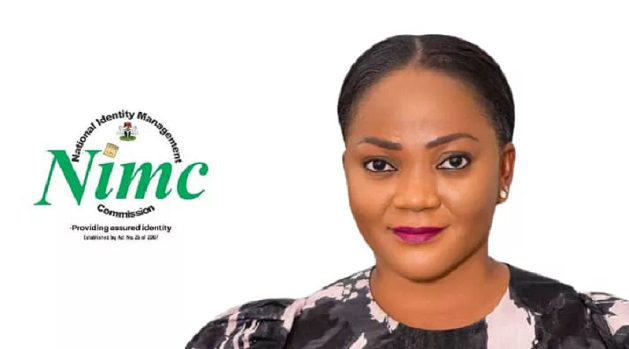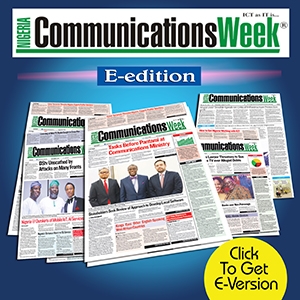Broadcasting
WATISE 2024: Experts Set to Tackle Infrastructure Funding Challenges for Rural Telephony & Green Energy

After successfully hosting the first Edition of the West Africa Telecoms Summit and Exhibition (WATISE), a regional gathering of telecoms players and stakeholders in the industry, all is now set for the second edition, WATISE 2.0, according to the organisers, TechnologyMirror, an ICT and Telecoms news cum information website.

Announcing the WATISE 2.0 in Lagos, Southwest Nigeria, the Convener Isaiah Erhiawarien, said the theme of this edition is “Shaping the Future of the Telecoms Infrastructure Industry: Trends and Insights for a Digital Economy”.
The statement said that this year focus will be on the digital economy, the challenges of funding for the industry with particular reference to rural telephony and the quest for the deployment of green energy to tackle power generation crisis.
He said that the event which holds on April 18th at the Lagos Oriental Hotel will bring together leading players in the industry including the Executive Vice Chairman of the Nigerian Communications Commission (NCC), Dr Aminu Maida, who will deliver the keynote address and a major paper presentation from the Chairman of the Association Licensed Telecommunications Companies of Nigeria (ALTON), Engr Gbenga Adebayo.
The WATISE 2.0 has been endorsed by the Association of Licensed Telecommunications Companies of Nigeria (ALTON), while ICTLOCA, Nigeria’s local content advocacy group, is our technical partner.
The WATISE 2.0 will feature three panel discussion session with focus on Enhancing Rural Connectivity: Strategies for Expanding Telecom Infrastructure, The Big Data Issues, Digital Economy and Infrastructure Funding Challenges in the Telecoms Industry, and Trends, Insights and Solutions in Business Automation & Quest for Green Infrastructure.
The Convener said that WATISE 2.0 will offer opportunities for stakeholders to discuss, learn and share relevant digital transformations related to telecommunications infrastructure such as Submarine, Connectivity, Security, Datacenter landscape, Internet Xchange and market trends that can shape the industry’s future.
“The summit has been designed for telecommunications operators, regulators, industry base organisations, policy formulators, government agencies and consumers to discuss infrastructure trends, insights, challenges and provide solutions.
“It is also a policy dialogue forum for governments in the region and stakeholders to speak on market-centric issues and global tech solutions’ impact on the regional economy.”
He stated that the aim of the Summit is to redefine the future of telecoms services in the region, such that reliability in telecommunications infrastructure, protection, deployment and operation of such becomes crucial to all stakeholders.
He noted that the Summit is targeted at telecoms companies, 4G/5G service/solution providers, telecom tower manufacturers, policymakers and regulators and power solution providers.
Others were Infrastructure equipment manufacturers, Infrastructure service providers, energy efficient technology providers, renewable energy companies, infrastructure developers and Wireless internet service providers among others.
According to the Convener, the event, which already has registered participants from Tunisia, Egypt, Republic of Benin will explore the abundant investment opportunities in the tech sector with the aim of attracting more investors into the sector.
Broadcasting
Tim Akano Recounts 20-Year Growth, Media Support at NITRA End-of-Year Meet

Mr. Tim Akano, New Horizons Chief Executive Officer, took centre stage at the Nigerian Information Technology Reporters’ Association (NITRA) annual end-of-year meeting on Thursday, December 18, 2025, recounting the company’s remarkable growth and reaffirming free IT training for journalists.

Tim Akano, New Horizons Chief Executive Officer, in a group photograph with NITRA Members
Speaking directly to IT media members at the company’s training facility in Lagos, Akano acknowledged the critical role journalists played in supporting New Horizons during its formative years two decades ago.
He detailed how the firm evolved from a handful of staff to one of Africa’s leading ICT skills training organisations, now employing about 500 staff across multiple training centres nationwide.
Akano Spotlights Youth Training, University Partnerships
Akano highlighted that New Horizons has trained over 500,000 youths, particularly tertiary institution students, equipping them with practical IT skills essential for Nigeria’s digital economy.
He announced recent partnerships with universities, including a new agreement with Afe Babalola University, to scale hands-on training programmes for students.
“This growth would not have been possible without the media’s support in documenting our journey,” Akano stated, pledging continued free IT skills training for media members to remain competitive in the evolving digital landscape.
Reciprocal Support Defines Long-Standing Partnership
The venue hosting the NITRA meeting underscored Akano’s generosity; NITRA Secretary Chidiebere Nwankwo secured the free facility after contacting him—a gesture consistent with New Horizons hosting multiple association events and training IT journalists since its inception 20 years ago.
Participants shared personal testimonies of Akano’s support, including veteran journalist Aaron Ukodie, whose daughter—an Accounting graduate from the University of Johannesburg—received NYSC placement and IT scholarship at New Horizons.
The Guardian’s Yemi Adeyemi recounted Akano accommodating his editor’s child for mandatory IT training after other firms declined.
Members praised Akano’s commitment to human capital development as evidence of deep appreciation for the media community that chronicled New Horizons’ success over two decades.
Broadcasting
NIMC rolls out Pre-Enrolment Portal for seamless NIN registration

National Identity Management Commission (NIMC) has launched the NIMC Pre-Enrolment Portal to revolutionise the National Identification Number (NIN) enrolment process, enabling applicants within Nigeria and in the Diaspora to capture biodata online prior to biometric verification at enrolment centres.

NIMC
Accessible via penrol.nimc.gov.ng, the platform allows users to fill enrolment forms, schedule appointments, upload supporting documents securely, and manage personal details directly, thereby slashing congestion, minimising wait times, boosting data accuracy and enhancing overall service efficiency at centres nationwide.
NIMC Director-General and CEO, Engr. (Dr) Abisoye Coker-Odusote, spearheaded the initiative as part of the Commission’s technology-driven strategy to fortify institutional performance, aligning with President Bola Ahmed Tinubu’s Renewed Hope Agenda that emphasises digital transformation, efficient public service delivery and inclusive national development.
Dr Kayode Adegoke, Head of Corporate Communications, highlighted key benefits including simplified biodata handling, confidential data protection through robust security measures, reduced physical centre visits and heightened operational effectiveness, urging all prospective enrollees to adopt the portal for a faster, citizen-friendly experience.[conversation_history]
The move underscores NIMC’s mandate under the NIMC Act No. 23 of 2007 to manage the National Identity Database, issue NINs and foster a reliable digital identity ecosystem vital for national planning, with users advised to complete pre-enrolment online before heading to selected centres for biometrics.
Broadcasting
MultiChoice Talent Factory Calls for Entries Into Fully Funded Film Training Programme

MultiChoice Talent Factory (MTF), a Pan-African film and television training institution, has announced the opening of applications for its 2026 intake.

MultiChoice
The fully funded programme is open to African graduates aspiring to become directors, filmmakers, scriptwriters, producers and storytellers.
According to MultiChoice, the nine-month accredited curriculum combines online learning with intensive in-person training, and is designed to balance theoretical knowledge with practical immersion.
MTF academies are located in Kenya, Nigeria and Zambia, and serve aspiring filmmakers from 14 African countries. Since its inception in 2018, the initiative has trained 296 filmmakers, with graduates producing more than 42 movies aired on DStv, GOtv and Showmax platforms.
Organisers said alumni of the programme have gone on to establish over 50 production companies, while many continue to work within the MultiChoice ecosystem.
Graduates have also won accolades at the Africa Magic Viewers’ Choice Awards, Kalasha Awards, Uganda Film Festival and Women in Film Awards.
Applications for the 2026 intake close on Feb. 27, 2026. Interested candidates can visit https://apo-opa.co/3XW53oE for programme requirements.

 News2 days ago
News2 days agoUS Okays $2.1Bn for Christian Healthcare in Nigeria

 General News2 days ago
General News2 days agoThe Mood Market to Light Up Lagos with a Rooftop Gifting, Food & Lifestyle Fair this Christmas

 Broadcasting2 days ago
Broadcasting2 days agoTim Akano Recounts 20-Year Growth, Media Support at NITRA End-of-Year Meet

 News2 days ago
News2 days agoSERAP Asks Tinubu to Release CTC of Tax Bill

 E-Financial2 days ago
E-Financial2 days agoSterling Bank, Water.org, Sterling One Foundation Partner on WASH Loan for Millions

 General News2 days ago
General News2 days agoLeo Stan Ekeh: A “Rare Avis”, an Unconquerable Entrepreneur

 General News2 days ago
General News2 days agoFCCPC Forces Ikeja Electric Into Compliance, Unseals Headquarters After Rights Breach

 General News2 days ago
General News2 days agoNITDA Wins Triple SERVICOM Honours for Citizen-Centred Service Delivery


























